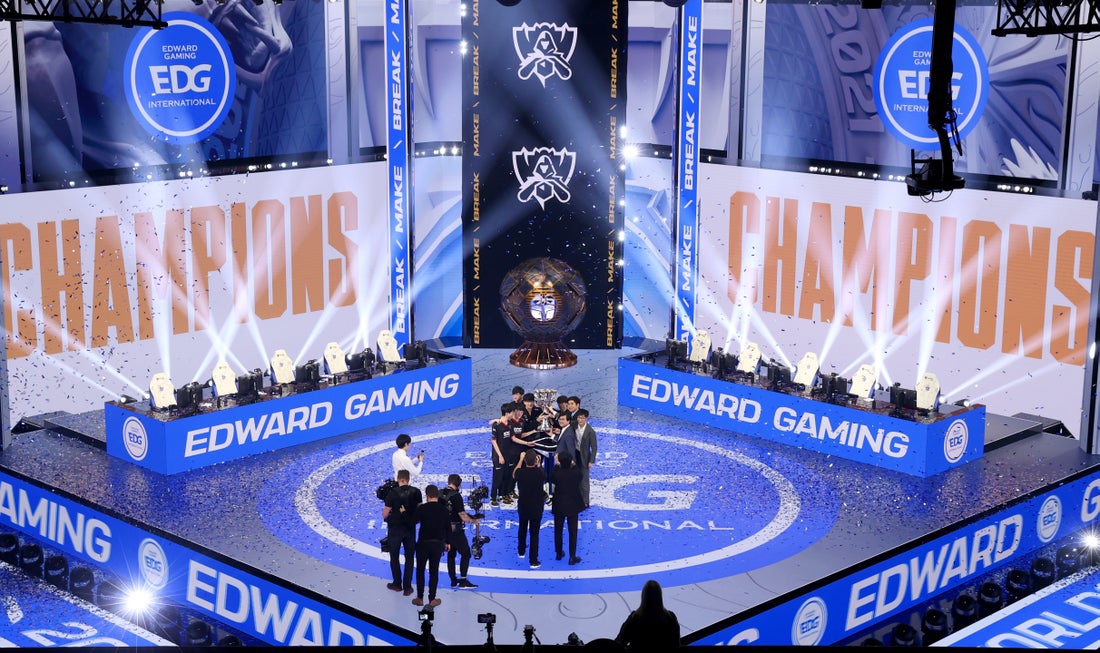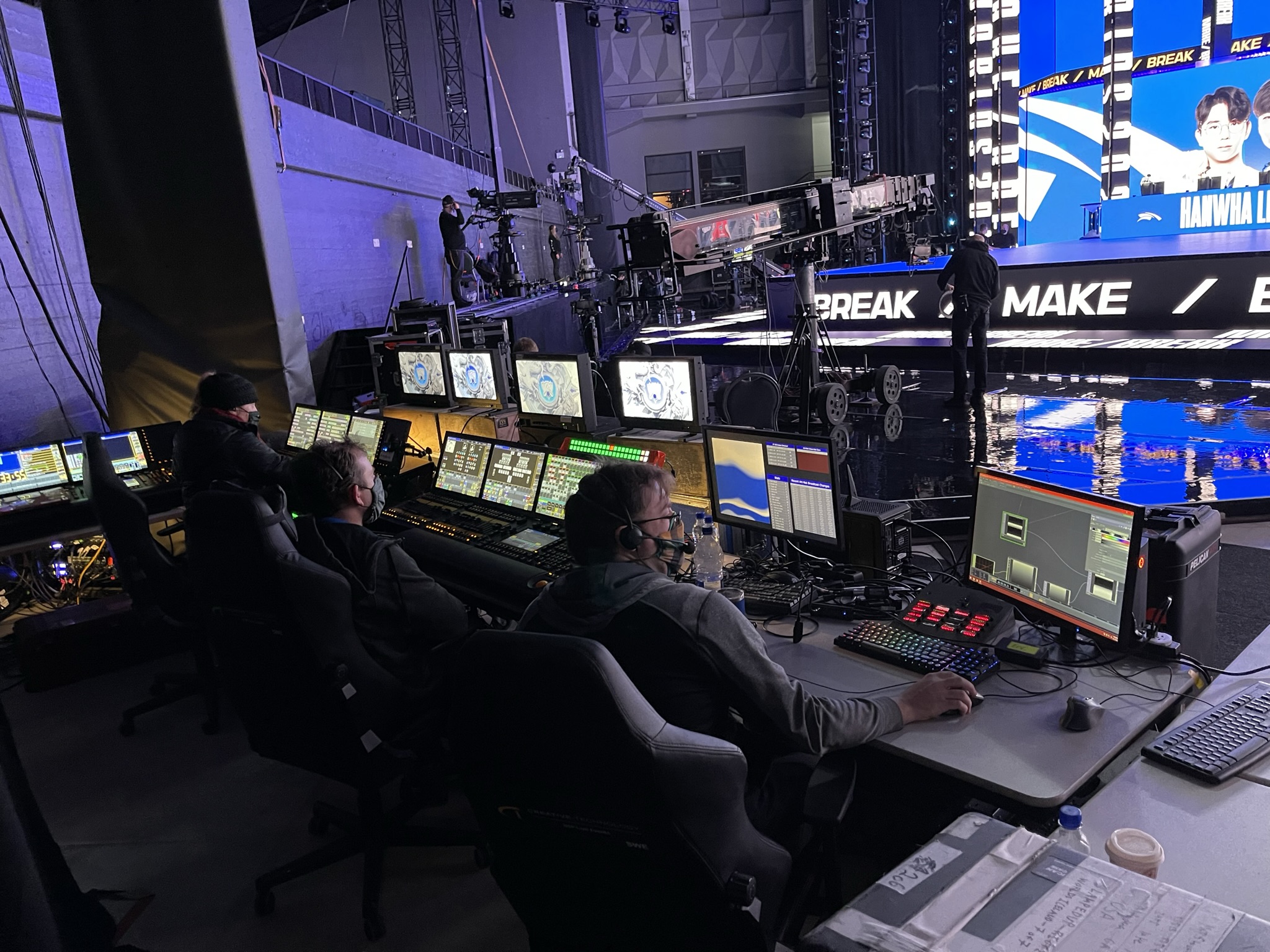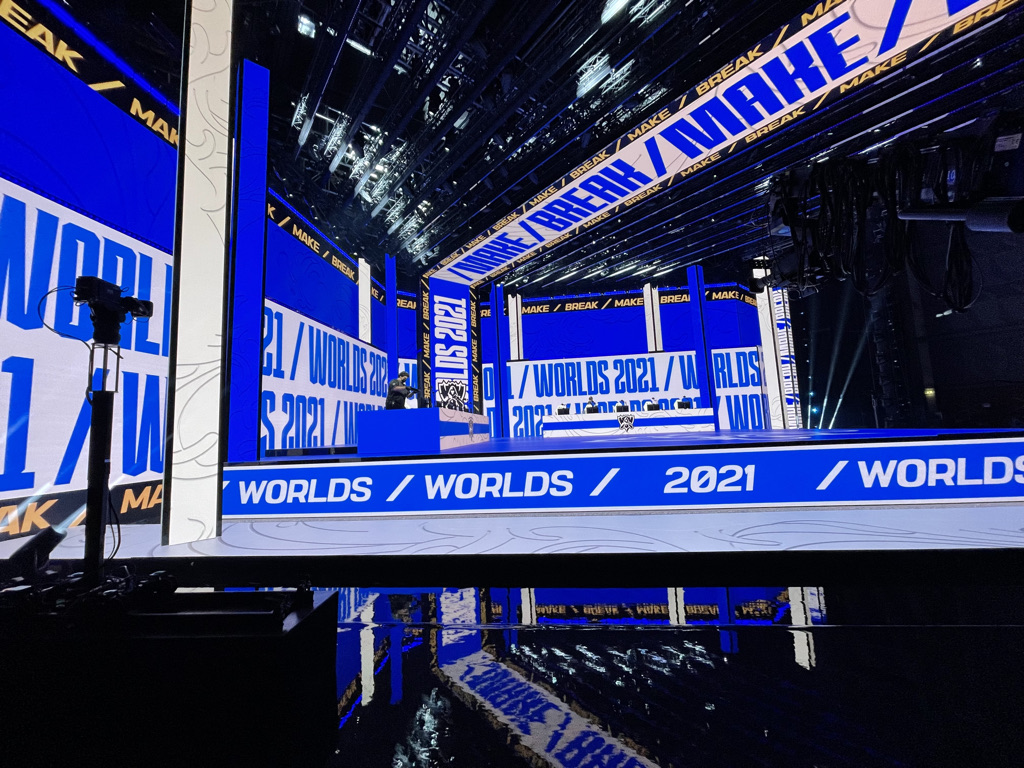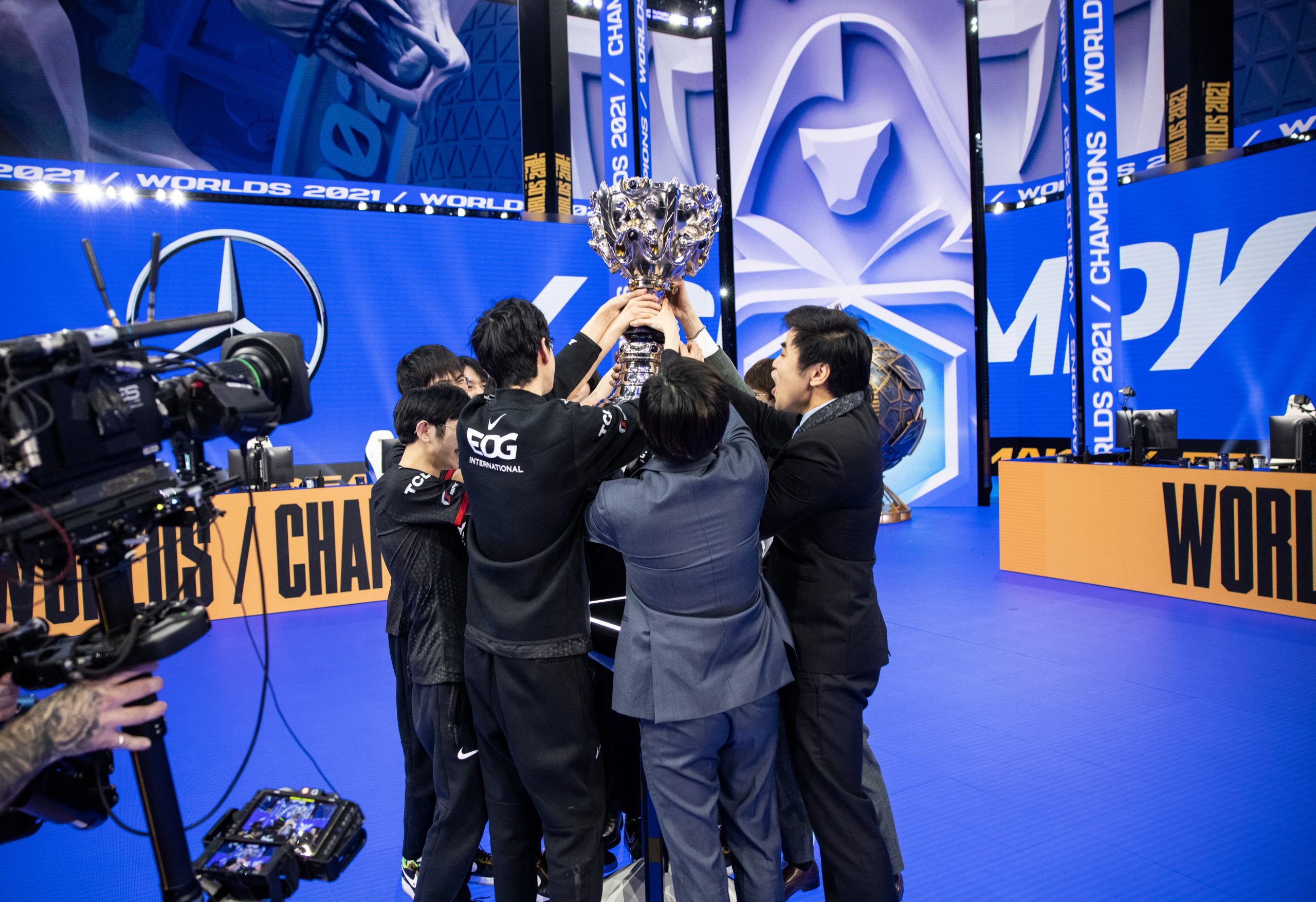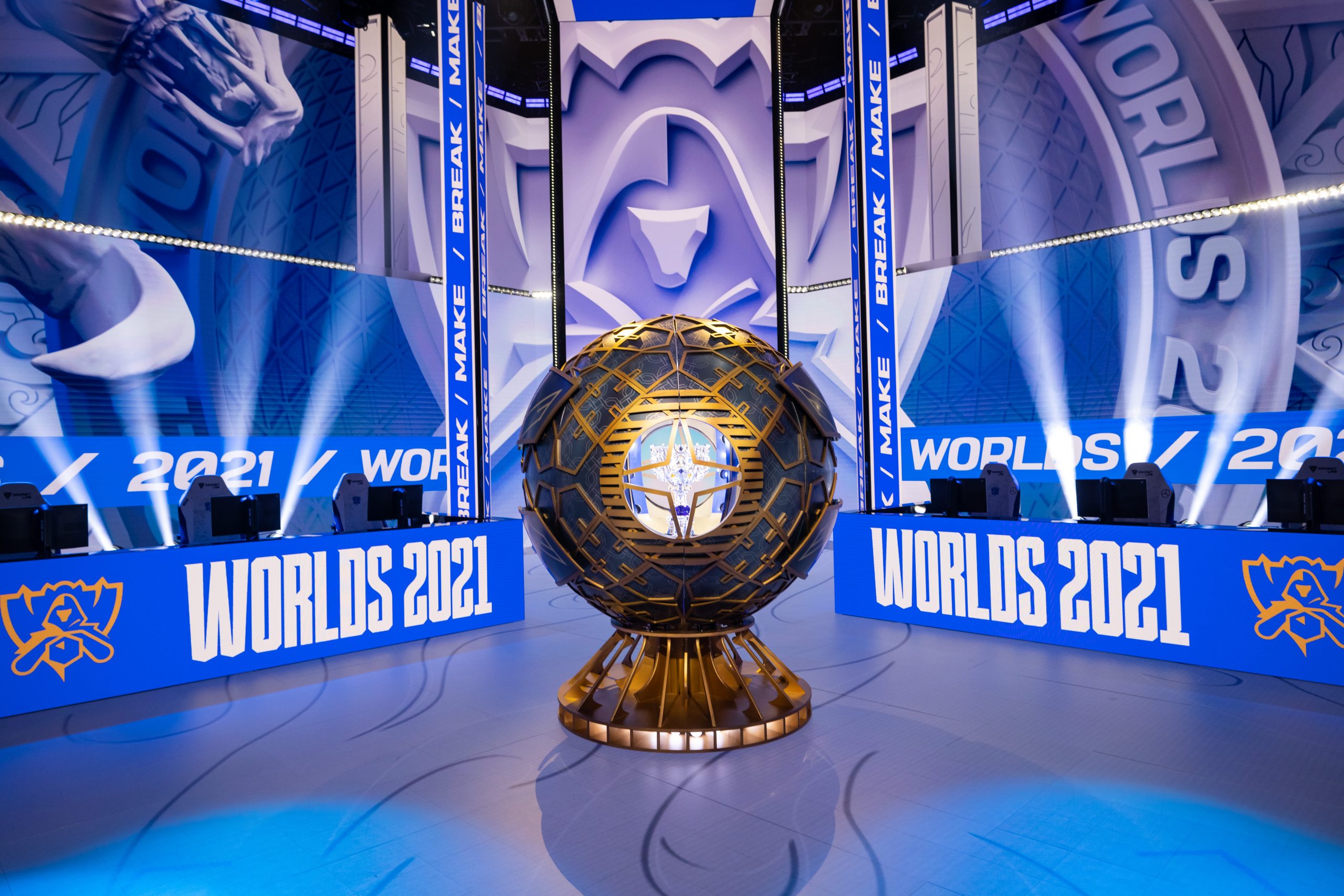Despite Last-Minute Site Change, Riot Games Breaks Records With League of Legends World Championship in Iceland
Originally slated to take place in China, esports event sets new viewership records
Story Highlights
The most-watched esports event on the planet, Riot Games’ League of Legends World Championship Final always features exciting new production technologies and elements to blow fans away. The record-setting Worlds 2021 production in Reykjavík was no different as Riot endeavored to compensate for the lack of screaming fans in the stands with high-end production quality and storytelling.
“We were looking for ways to elevate the Worlds experience to a new level [despite] the absence of a live audience,” says Nick Troop, executive producer, League of Legends and Wild Rift global esports events, Riot Games. “Yes, the energy that comes from a live audience cannot be replicated, so we explicitly don’t try to. Instead, we look to the other tools that are available across our global broadcast apparatus. To make it feel like a more epic experience, we went all out on the camera kit, the LED [stage], and anything else that could add excitement to the narrative.”
Go further behind the scenes of the 2021 League of Legends World Championship broadcast at the SVG Esports Production Summit in Los Angeles on Nov. 16, where Nick Troop will serve as Keynote Speaker. CLICK HERE for more information and to register now.
From China to Iceland: Navigating the Last-Minute Location Change
In addition to finding new ways to add energy and excitement to the broadcast without a live audience, Riot Games had to overcome a host of unprecedented pandemic-era challenges, including a last-minute move from China to Iceland. In early August — less than three months before Worlds were set to begin — Riot announced that Worlds would be shifting from Shenzhen, China, to an undisclosed location in Europe. Shortly after, Riot announced that Worlds would be held in Reykjavík, site of its successful LoL Mid-Season Invitational in May.
“We were put in an extremely challenging position this year, but we were able to get it done,” says Troop. “We were able to hit the ground running pretty quick. Thanks to our existing strategic relationships in Iceland from MSI, we were able to start laying a good amount of track in advance. Of course, early on, there was stress about how we could get all of this done in such a short amount of time, but, truthfully, I had zero anxiety about people’s capability to deliver, because we have such an amazing team.”
Onsite in Iceland: World-Feed Produced, Distributed to the Regions
In Reykjavík at Hall A of the Laugardalshöll indoor sports arena, Riot Games produced a main world feed out of an NEP mobile unit for Worlds (Oct. 5–Nov. 6). The truck fed content to a Riot-owned transmission flypack onsite for distribution across the globe.
The world feed, along with a cavalcade of ancillary content and camera angles, was provided to 19 regional broadcast partners who customized the broadcast for their respective audiences. For example, the English broadcast leveraged the world feed from Reykjavík, but its analysts and casters were located at Riot’s studio in Berlin. Broadcasts in Chinese, Korean, Spanish, and other languages were centralized at studios across the planet and leveraged the world feed.
A total of 26 transmission feeds were sent to the 19 regions/broadcasts via the company’s dedicated Riot Direct network, and more than 210 TB of data was uploaded from the venue during the month-long event. More than 70 video lines connected the local truck and a Riot transmission network to serve a variety of needs, including the Proview experience, camera iso feeds, custom QC multiviewers, and Facecams for each player.
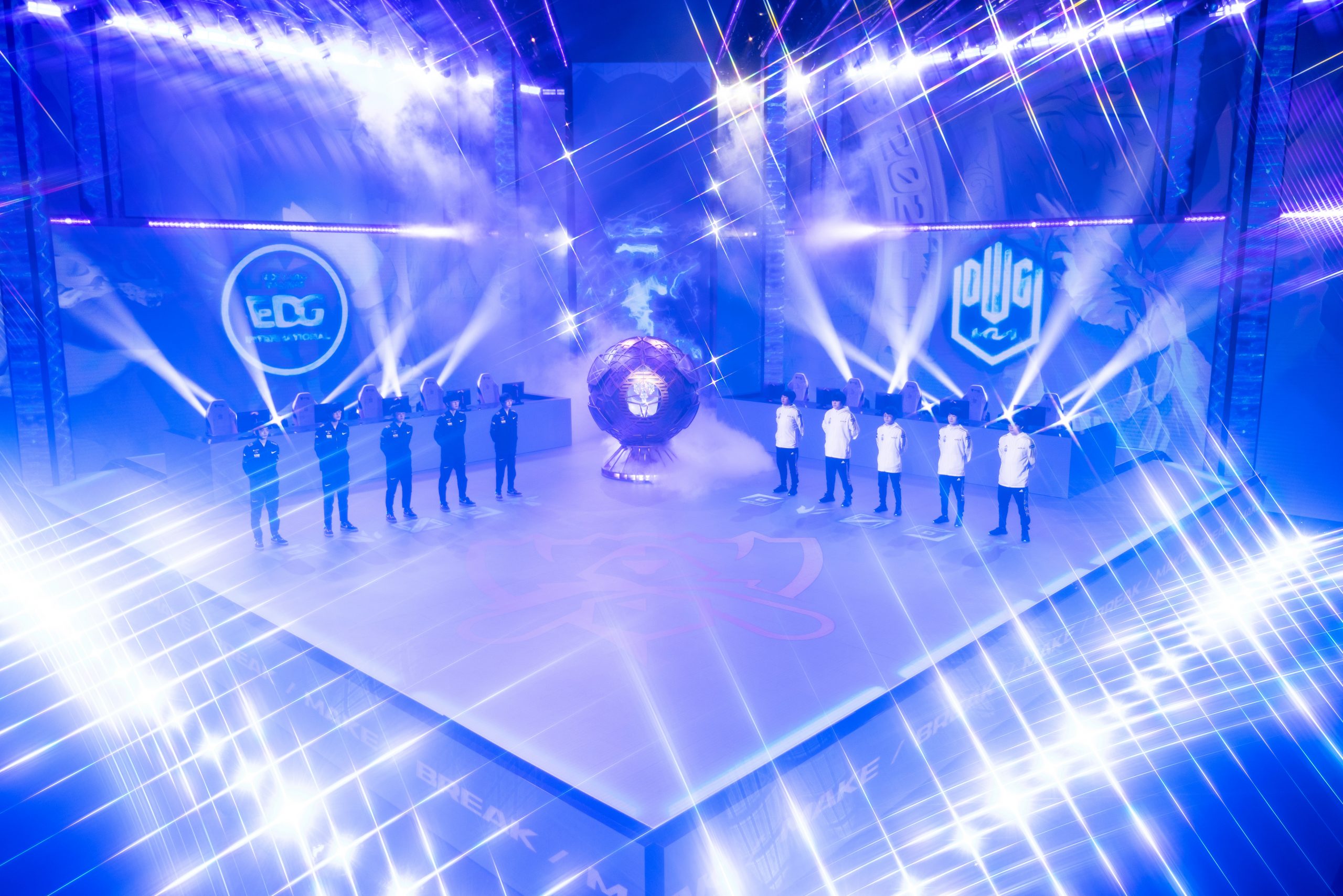
Team EDward Gaming (left) and Team DAMWON KIA onstage at the League of Legends World Championship Finals Opening Ceremony
“We send the world feed plus all of these other feeds to all the different regions so they build their own show from that,” says Max Trauss, broadcast architect, Riot Games. “Even though we are primarily onsite for the show in Iceland, the transmission count ends up getting close to what it would be for a remote show just because of the massive distribution side.”
Riot also completed successful tests of new IP-based protected MADI streams between Los Angeles and Iceland with latency of less than 250 ms using Nevion Virtuoso via Riot Direct.
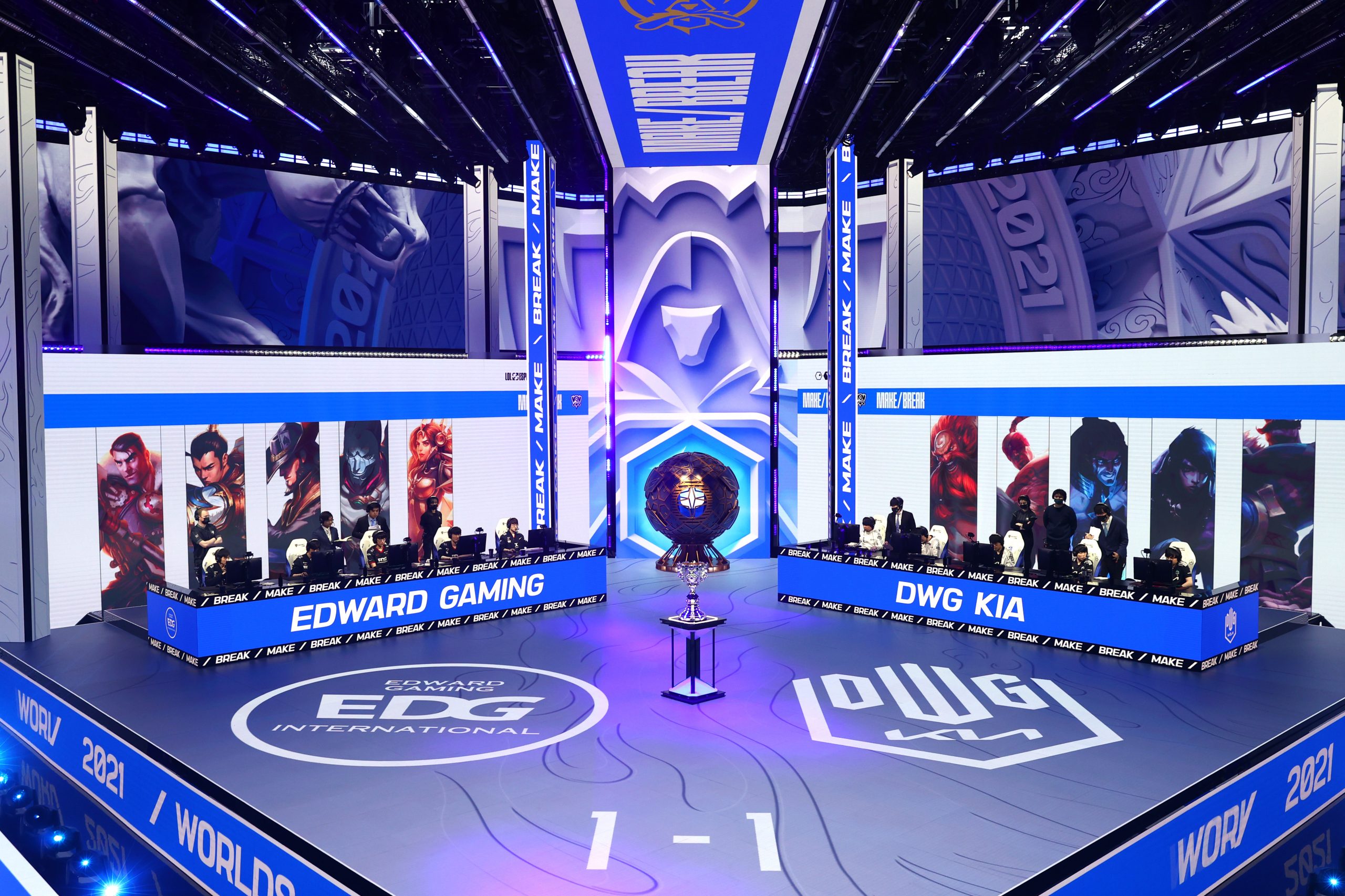
Team EDward Gaming (left) and team DAMWON KIA compete at the League of Legends World Championship Finals. (Photo: Clive Rose/Riot Games)
For comms, the intercom system included 56 Riedel Bolero packs and 55 wired panels, plus a ClearCom Helixnet system. The team also used three 128×128 Riedel Artist frames and two full 64-channel MADI streams. Eight lines fed to L.A. and 13 dynamic lines to Berlin — all via Riot Direct. Unity servers were also used for remote personnel and backup.
“The regions are really the lifeblood of what makes this whole [operation] work, so we want to make sure we can give them the best possible product,” says Trauss. “It has been a lot of fun working with the regions over the last year. There are a lot of really smart and enthusiastic people at Riot, and it has been humbling to see how much everybody wants to help each other out from region to region.”
Competition Stage: An LED Feast for the Eyes
Riot worked with Quince to design an LED-based competition stage in Reykjavík that would serve as the home of Worlds 2021. The result was a slick LED wall and floor that provided a diverse set of tools for adjusting the look of the broadcast throughout the month-plus of shows.
“Because we had to decide on everything so quickly, we were looking for something that would give us the most versatility possible,” says Sam Chaimson, manager, live broadcast production, Riot Games. “We wanted the best canvas to work on as we began to understand what we wanted the event to look like. It wasn’t so much transplanting things from China to here, but more building it from the ground up very quickly. As a result, we had to give ourselves a flexible set of tools so that we could adapt over time and continue to create distinctive and unique looks to make a six-week tournament feel fresh and alive the whole way through.”
To drive this massive LED volume, the control system consists of an array of 19 media servers, driving more than 44 4K feeds. The media-server array includes 14 Disguise VX4’s for high-resolution playback and screen control, along with five Ventuz servers to drive real-time content and manage data integration. Together, the array drives a massive 183,789,824 pixels of traditional LED screen space and an additional 120 Art-Net universes worth of pixel-mapped lighting fixtures.
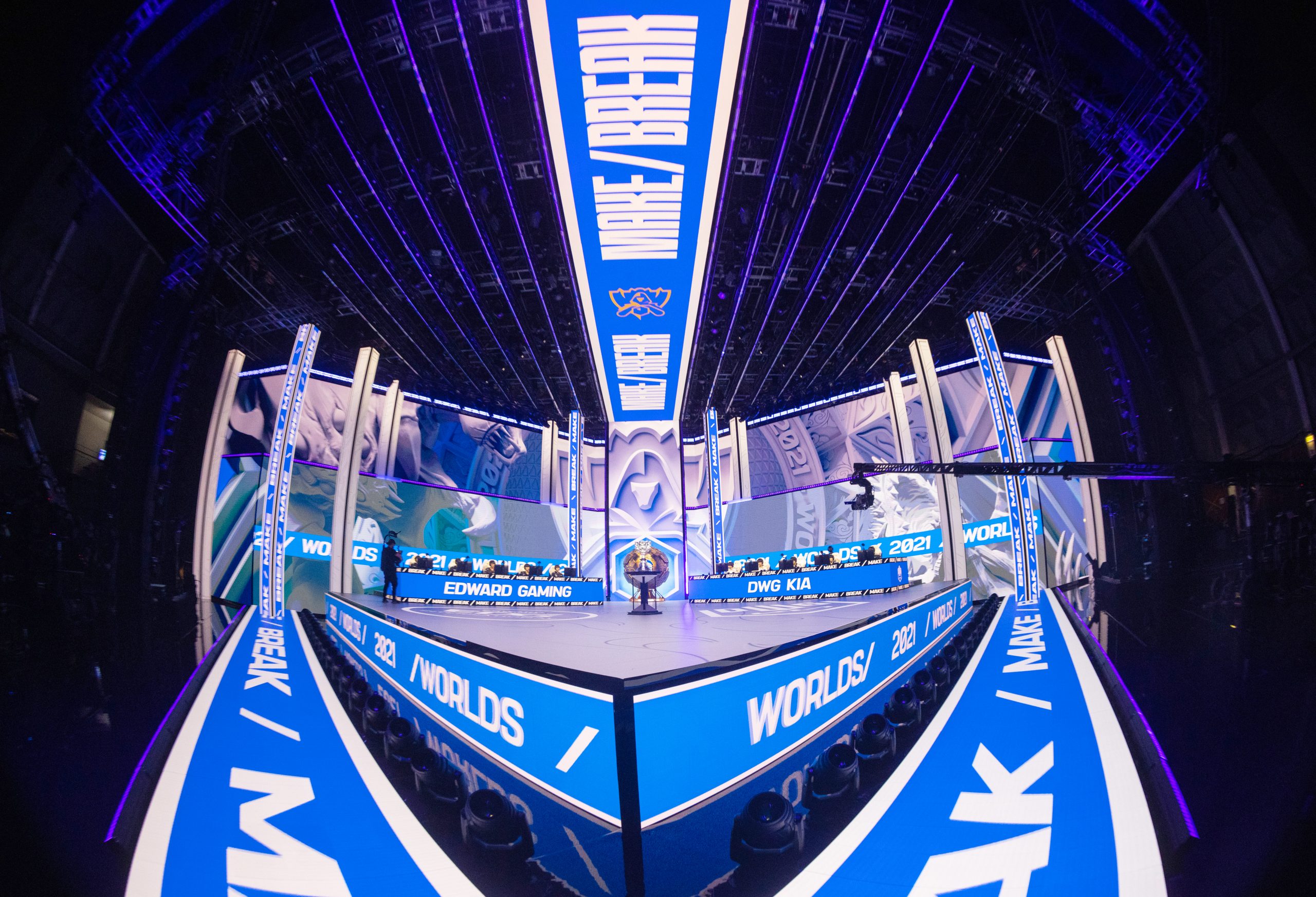
Team EDward Gaming (left) and Team DAMWON KIA compete at the League of Legends World Championship Finals
Among the 29 cameras covering the studio were 10 specialty cameras: two techno cranes, two dolly cams, four remote dollys, one tower cam, and one Steadicam — plus 19 additional lock-offs, robos, and standard studio cameras.
“Part of the strategy with the big camera kit was to differentiate our coverage from [broadcasts] that fans have been seeing year-round without an audience,” says Chaimson. “Even though it’s still a studio with players on stage, it feels different at its core. We have all kinds of fun toys that make the coverage look different aesthetically and feel different from year-round League of Legends coverage. Of course, it’s not exactly the same as having an audience and thousands of screaming fans, but it does have an elevated presentation that fans can’t get anywhere else.”
Opening Ceremony: Pivot to Music Video Creates New Challenges, Opportunities
Whether it’s a virtual dragon flying through the air, an AR-powered K-pop group, or a holographic hip-hop group, LoL Worlds Final Opening Ceremonies are always a must-see for esports and non-esports fans alike. Although the 2021 edition in Reykjavik was a bit different given that there were no fans onsite, Riot still found a way to capture the imagination of LoL fans around the world during this year’s Opening Ceremony.
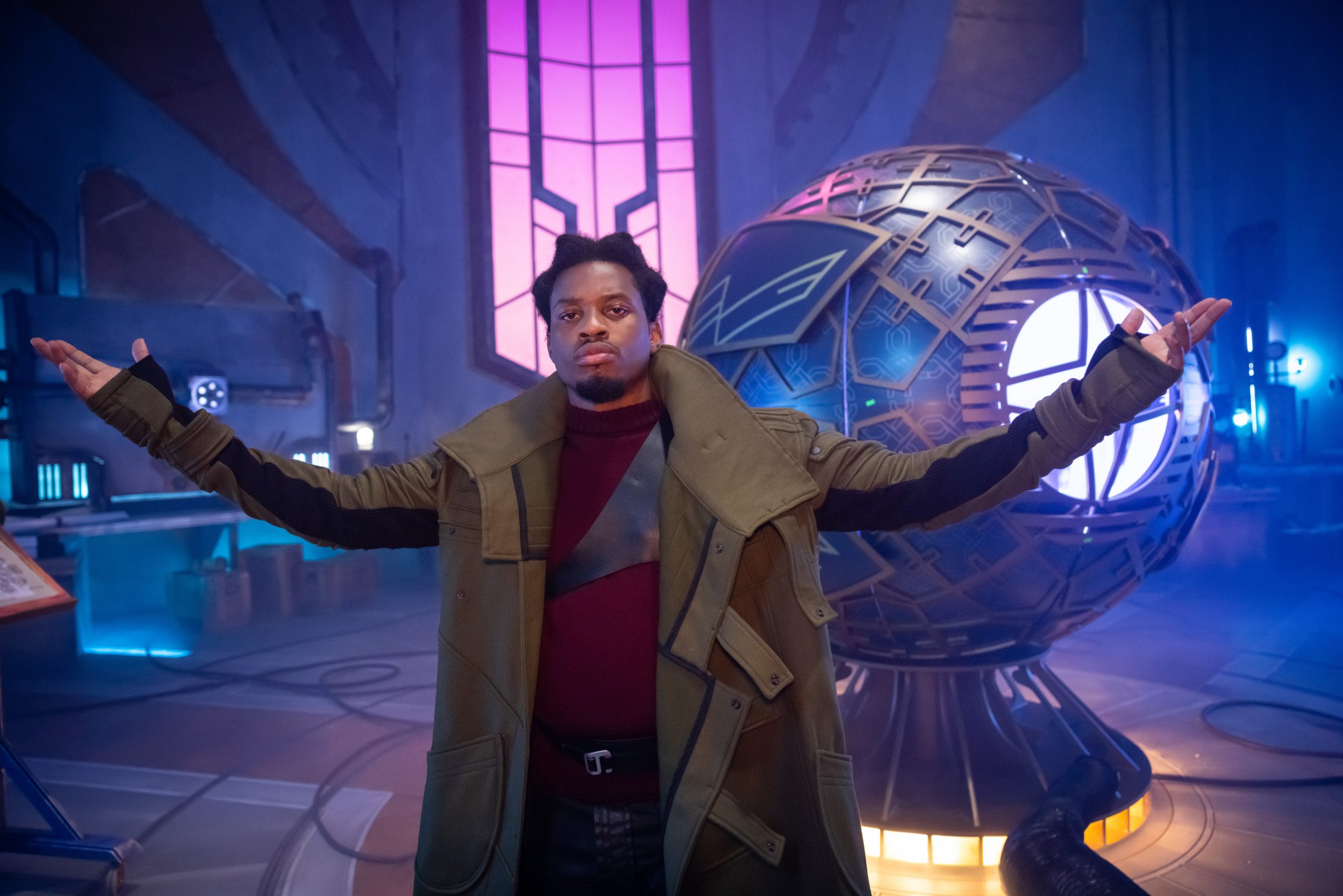
Denzel Curry performs for the League of Legends World Championship Finals Opening Ceremony. (Photo: Colin Young-Wolff/Riot Games)
“With the pivot [to Iceland] and no live audience, it made sense to rethink our bag of tricks,” says Troop. “[In the past], the creative thesis around World Final Opening Ceremonies has been to do things that blend mixed reality and physical production. We want the audience to suspend their disbelief and just believe that a piece of League of Legends has come to life in front of them.”
The original plan for Shenzhen was to integrate live elements with preproduced elaborate music videos to create an immersive experience for fans in the stadium. However, that changed when Worlds shifted to Iceland.
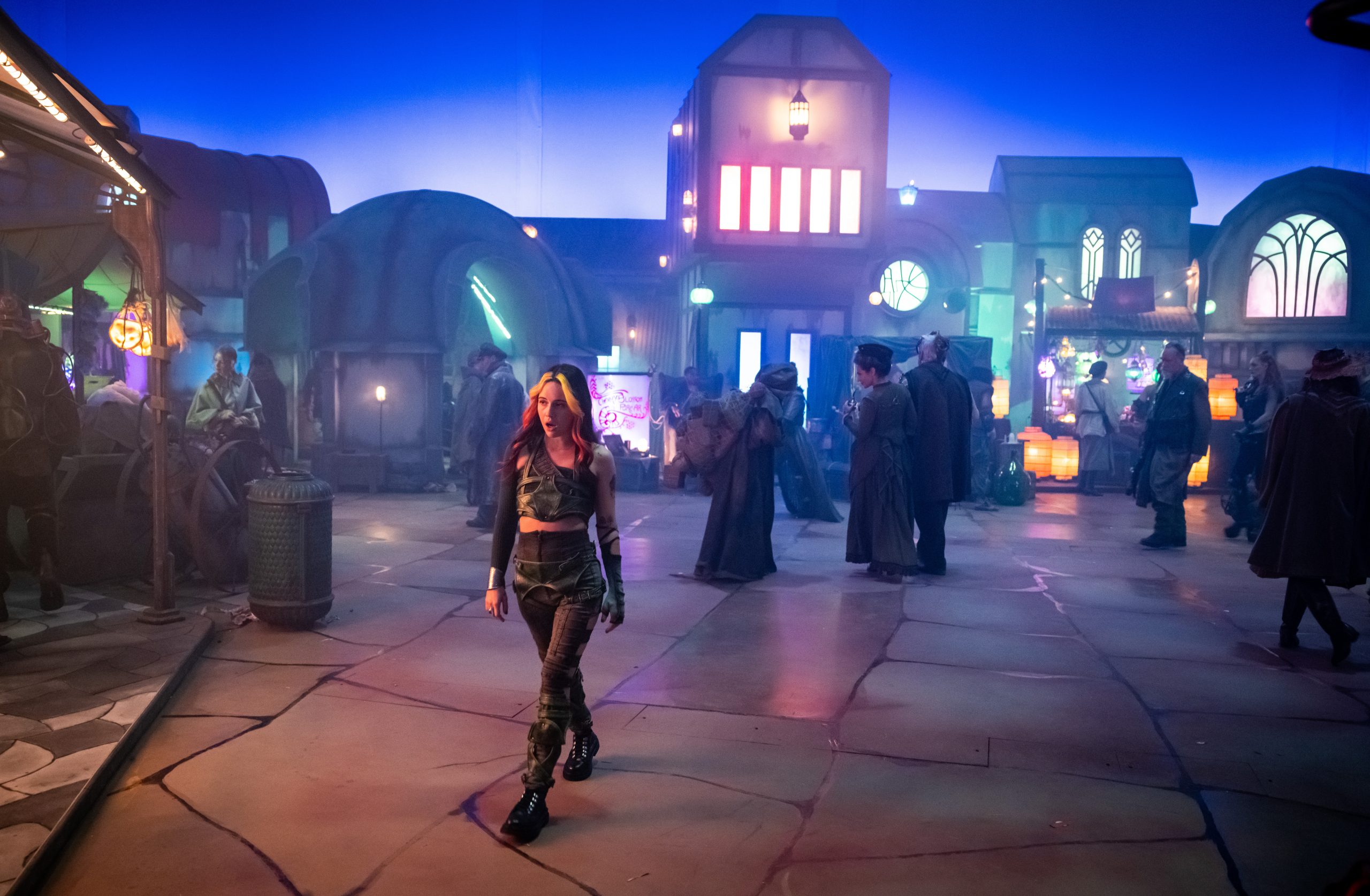
Bea Miller performs for the League of Legends World Championship Finals Opening Ceremony. (Photo: Colin Young-Wolff/Riot Games)
“Without naked eyeballs in venue, expending resources, time, and creative calories to do that didn’t make much sense,” says Troop. “We still want to bring [the LoL] world alive, but we knew we had to do that in a different way. This year, we made the decision to shift to a short-film model and focus on cinematic storytelling, tools, language, and production processes.”
Instead of a live Opening Ceremony in Reykjavík, Riot produced a 13-minute series of music videos that featured real-world sets cut together with the Arcane animated series based on League of Legends (which debuted on Netflix the same day). The short film was a mix of musical performances (including Imagine Dragons, Bea Miller, and PVRIS), animation sequences, and live-action sequences set on large rets designed to look like cities from LoL.
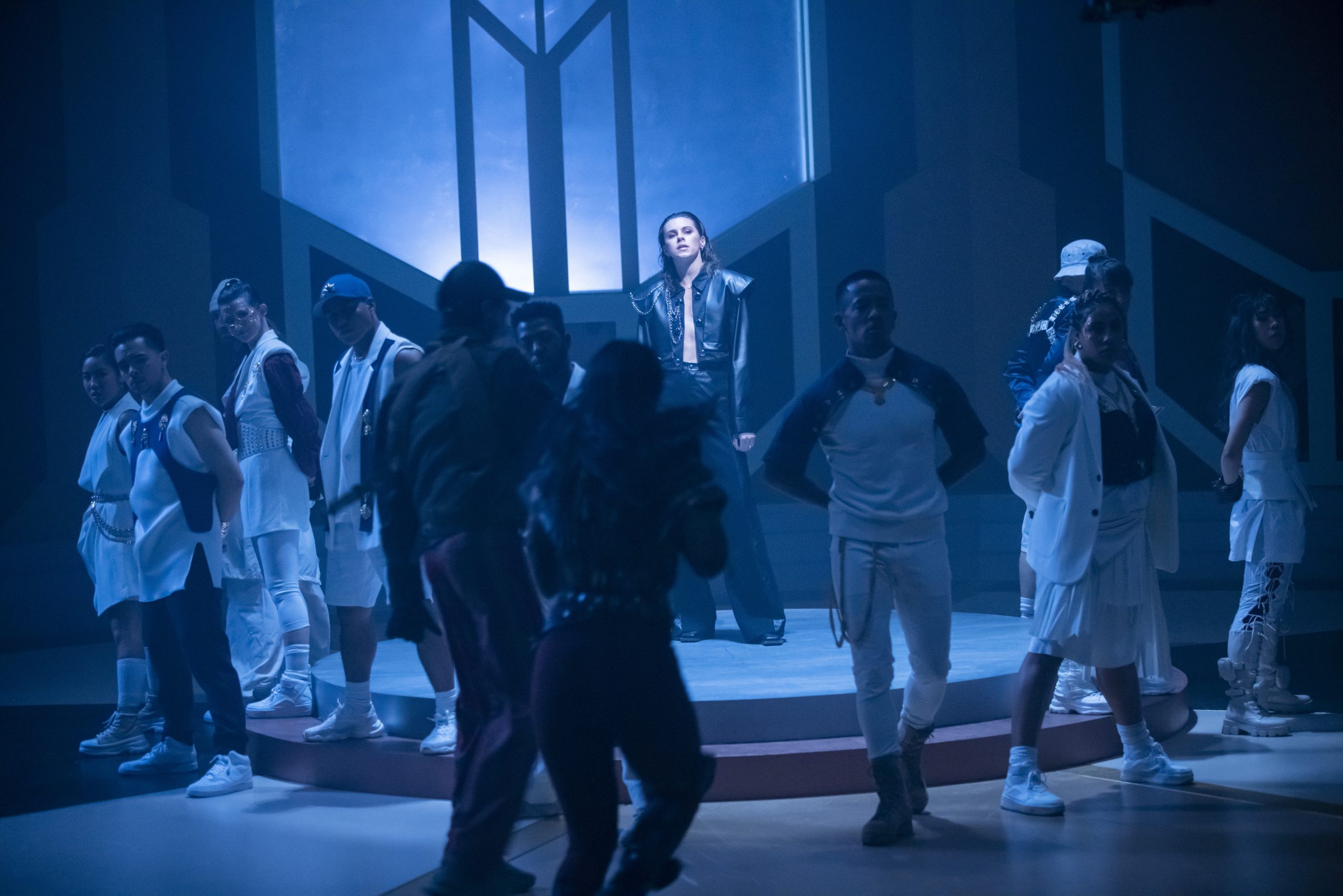
PVRIS performs for the League of Legends World Championship Finals Opening Ceremony. (Photo: Colin Young-Wolff/Riot Games)
“When we made the pivot, we kept the music videos, but they essentially went from being the spice to the meat,” says Troop. “And then we spent nine very crazy days rewriting the narrative and figuring out how to bring all the pieces together. It’s certainly different [from years past], but we feel like it’s still a pretty phenomenal product for the fans.”
Look Back: Concurrent Viewers Peak at 4 Million-Plus
Worlds 2021 is now in the books, and the Final proved to be a genuine blockbuster, peaking at more than 4 million concurrent viewers during the closing moments of the last map — a new esports record.
“There’s 38 weeks of regional competition that ladders up into this event,” Troop explains, “and each region works extremely hard to tell their stories. We’re driven by the notion that we have to deliver a big exclamation point at the end of that global year-long effort. Between that motivation and the extreme competence of everybody across all of our internal teams, we were able to get it done despite all the hurdles. And, honestly, I don’t know anybody else in the world who could have done this but our team.”
